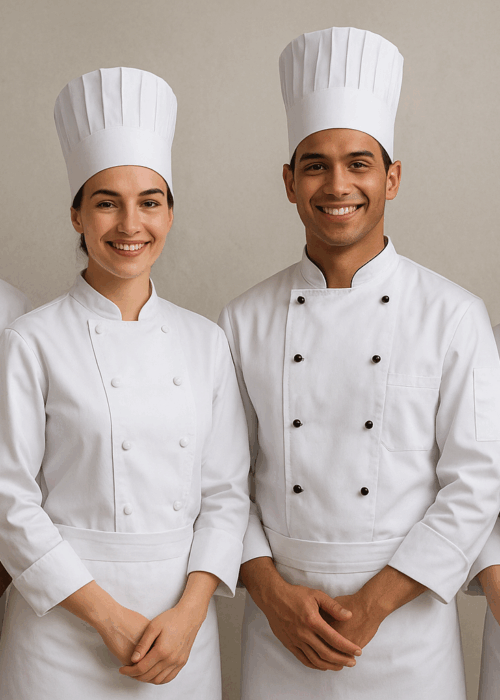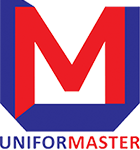Chef Uniforms: The Essential Guide for Kitchen Professionals

Introduction
The culinary industry is a space where precision, creativity, and discipline merge seamlessly—every aspect of the kitchen matters, from the sharpness of knives to the presentation of dishes. Yet, one element often overlooked by outsiders is the attire worn by the professionals behind the scenes. For chefs, clothing is not just about looking presentable; it plays a crucial role in safety, identity, and efficiency. The tradition of chef uniforms goes back centuries. What began as simple garments to withstand heat and spills has evolved into a global standard of professionalism. Today, the attire carries symbolic weight while offering practicality, ensuring chefs can work with confidence and style.The Evolution of Kitchen Attire
The journey of professional culinary clothing is deeply rooted in history. Early garments were created out of necessity, protecting workers from fire, sharp tools, and hot liquids. Over time, the design evolved into a recognisable standard, characterised by iconic features such as the double-breasted jacket and tall hat. These details were not chosen for appearance alone but represented authority, cleanliness, and respect for the culinary craft. Modern times have brought further innovation. With advances in fabric technology, kitchen wear has become more comfortable, breathable, and adaptable to the high-energy environment of professional kitchens. This balance of tradition and progress ensures that uniforms retain their symbolism while meeting contemporary needs.Why Attire Matters in the Kitchen
In a fast-paced environment where seconds count, clothing must serve more than an aesthetic purpose. Kitchen attire provides the first line of defence against hazards like boiling water, hot oil, and sharp blades. It ensures professionals remain safe while working in conditions that can often be unpredictable. Beyond protection, attire reinforces order and discipline. It creates a sense of unity among the staff, presenting the kitchen as a cohesive team rather than individuals. A consistent dress code also conveys professionalism to guests, making attire a silent ambassador of the establishment’s standards.Core Components of a Professional Look
A complete set of kitchen attire consists of several elements, each designed with a specific purpose. Together, they form a protective and practical ensemble that allows chefs to focus on their craft without distraction.- Jacket: Usually double-breasted, it can be reversed to hide stains while also offering extra fabric layers for heat protection.
- Pants: Designed to be loose-fitting, allowing comfort and airflow during long hours of movement.
- Apron: Acts as a shield, protecting against splashes and extending the lifespan of the jacket.
- Headwear: From traditional hats to skull caps, it helps maintain hygiene by containing hair.
- Footwear: Non-slip shoes reduce accidents while providing support during lengthy shifts.
Functionality Meets Comfort
Working in a kitchen demands endurance, as long hours in heated environments can be physically challenging. This makes comfort just as important as safety. Modern clothing solutions now feature lightweight, breathable fabrics that wick away moisture and keep the wearer cool. Ergonomic designs reduce strain, allowing culinary professionals to perform at their best without being held back by discomfort. Functionality is equally vital. Uniforms are built to withstand frequent washing and exposure to stains, ensuring longevity without compromising hygiene. Practical design features like adjustable fits and reinforced stitching add to their reliability, making them well-suited for demanding kitchen conditions.Professional Identity and Team Unity
Clothing in the culinary field also carries symbolic weight. A crisp, well-maintained outfit immediately reflects discipline and respect for the craft. In many kitchens, attire even indicates hierarchy, with distinctions between junior staff and head chefs made visible through design or colour. Beyond hierarchy, a uniform fosters unity. When everyone wears the same attire, it emphasises teamwork and shared purpose. This unity is essential in environments where coordination and collaboration are the keys to success. The attire thus becomes more than clothing—it becomes a visual expression of professionalism.Hygiene and Food Safety
Cleanliness is a cornerstone of the culinary industry, and clothing directly supports this principle. Wearing dedicated kitchen attire ensures that outside contaminants are kept away from food preparation areas. Spills and stains can be managed without compromising hygiene, thanks to fabrics designed for easy cleaning. This focus on hygiene builds trust with customers. A spotless uniform sends a powerful message about the establishment’s commitment to cleanliness and quality. It reassures diners that the highest standards are maintained not just in food preparation but in every detail of the operation.Choosing the Right Attire
Selecting professional clothing for the kitchen is not a one-size-fits-all decision. Durability and comfort are key, but affordability and maintenance must also be considered. Different fabrics, colours, and cuts offer options to suit the needs of individual establishments while allowing chefs to express personality without losing professionalism. The right choice ensures that clothing not only protects but also supports performance. When selected carefully, uniforms become an asset that contributes to both safety and workplace culture.Benefits in the Workplace
The advantages of standardised attire extend far beyond aesthetics. They impact performance, safety, and even morale:- Protection from burns, spills, and high heat.
- Comfort through breathable, durable fabrics.
- Reinforcement of hygiene standards.
- Creation of team identity and unity.
- Boost in professional appearance and customer trust.

